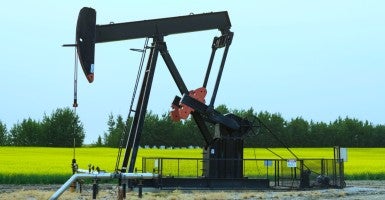How long does it take a single pipeline to be made? Thanks to the Obama administration, it apparently will take more than 7 years. In a move to pre-empt the State Department’s rejection of TransCanada’s permit application to build the Keystone XL, TransCanada has sent a letter to the State Department asking the agency to suspend its review. Rather than wasting time and money in lawsuits, TransCanada will likely wait until after the 2016 elections to take further action.
The Canadian company TransCanada first applied for a presidential permit to build the Keystone XL pipeline in 2008. To give this some context, juniors in high school who were just beginning their college search will now have finished high school, completed all four years of college, and be in the labor force—but not building Keystone XL.
During that period, numerous government-sanctioned studies evaluating the project consistently recognized three key points: Keystone XL is good for the economy, is environmentally safe, and will not contribute significantly to climate change.
The Obama administration’s handling of Keystone XL is much more damaging than a decision on a single pipeline. It signals that environmental activists and government bureaucrats are controlling outcomes for what should be normal, everyday business decisions. The policy debates are hijacked by special interests and are devoid of sound logic and reasoning.
The gross mismanagement of the Keystone XL decision sets a bad precedent for building energy infrastructure in the United States—a process that already takes a painstakingly long time.
The move isn’t too surprising, but it is certainly disappointing, considering what a mockery the administration has made of trying to build a simple pipeline that would create jobs and increase oil supplies from an important ally and trading partner. Critics will moan that that Keystone XL will employ only 35 to 50 permanent workers, dismissing the thousands of construction jobs created in the process. But the number of permanent jobs indicates how remarkably efficient the pipeline is. After all, construction jobs are by their very nature temporary. To diminish the construction of Keystone XL is diminishing the value construction jobs across the country provide.
The high output of labor generates value and wealth and frees up Americans to be more productive elsewhere in the economy, in the same way that one man on a backhoe loader increases efficiency and frees up a group of men with shovels to do other work.
Further, the State Department determined that Keystone XL poses minimal environmental risk to soil, wetlands, water resources, vegetation, fish, and wildlife. One of the most particular concerns of environmentalists has been the point where the pipeline crosses the Ogallala Aquifer in Nebraska, despite the fact that thousands of miles of pipeline already cross the aquifer.
Both the State Department and external geologists conclude that the aquifer is at extremely minimal risk of contamination because of the slope of the aquifer and the geologic makeup of the soil.
One major priority for the next administration should be to approve the Keystone XL pipeline and streamline energy infrastructure projects.






























